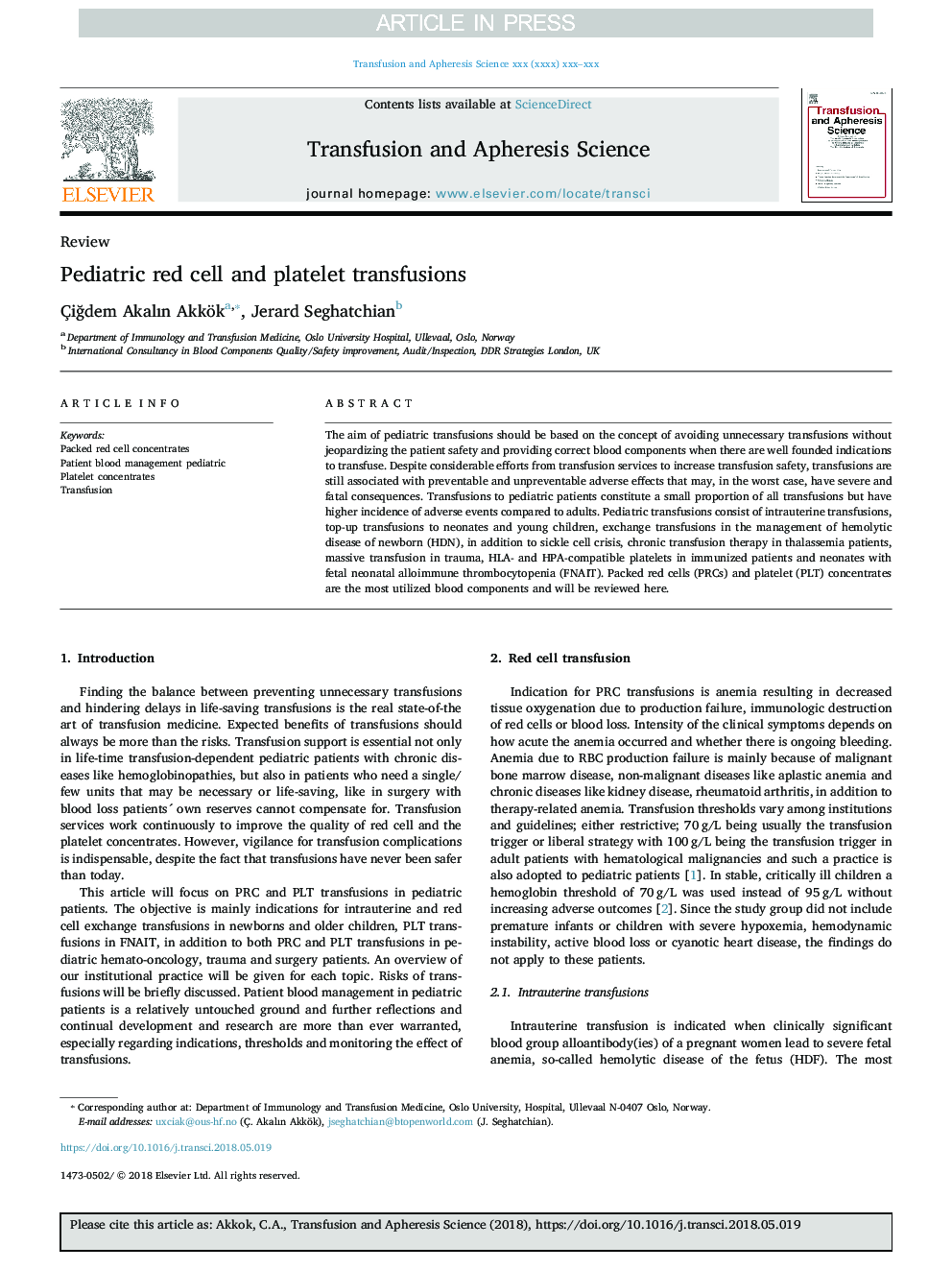| Article ID | Journal | Published Year | Pages | File Type |
|---|---|---|---|---|
| 8734925 | Transfusion and Apheresis Science | 2018 | 5 Pages |
Abstract
The aim of pediatric transfusions should be based on the concept of avoiding unnecessary transfusions without jeopardizing the patient safety and providing correct blood components when there are well founded indications to transfuse. Despite considerable efforts from transfusion services to increase transfusion safety, transfusions are still associated with preventable and unpreventable adverse effects that may, in the worst case, have severe and fatal consequences. Transfusions to pediatric patients constitute a small proportion of all transfusions but have higher incidence of adverse events compared to adults. Pediatric transfusions consist of intrauterine transfusions, top-up transfusions to neonates and young children, exchange transfusions in the management of hemolytic disease of newborn (HDN), in addition to sickle cell crisis, chronic transfusion therapy in thalassemia patients, massive transfusion in trauma, HLA- and HPA-compatible platelets in immunized patients and neonates with fetal neonatal alloimmune thrombocytopenia (FNAIT). Packed red cells (PRCs) and platelet (PLT) concentrates are the most utilized blood components and will be reviewed here.
Keywords
Related Topics
Health Sciences
Medicine and Dentistry
Hematology
Authors
ÃiÄdem Akalın Akkök, Jerard Seghatchian,
